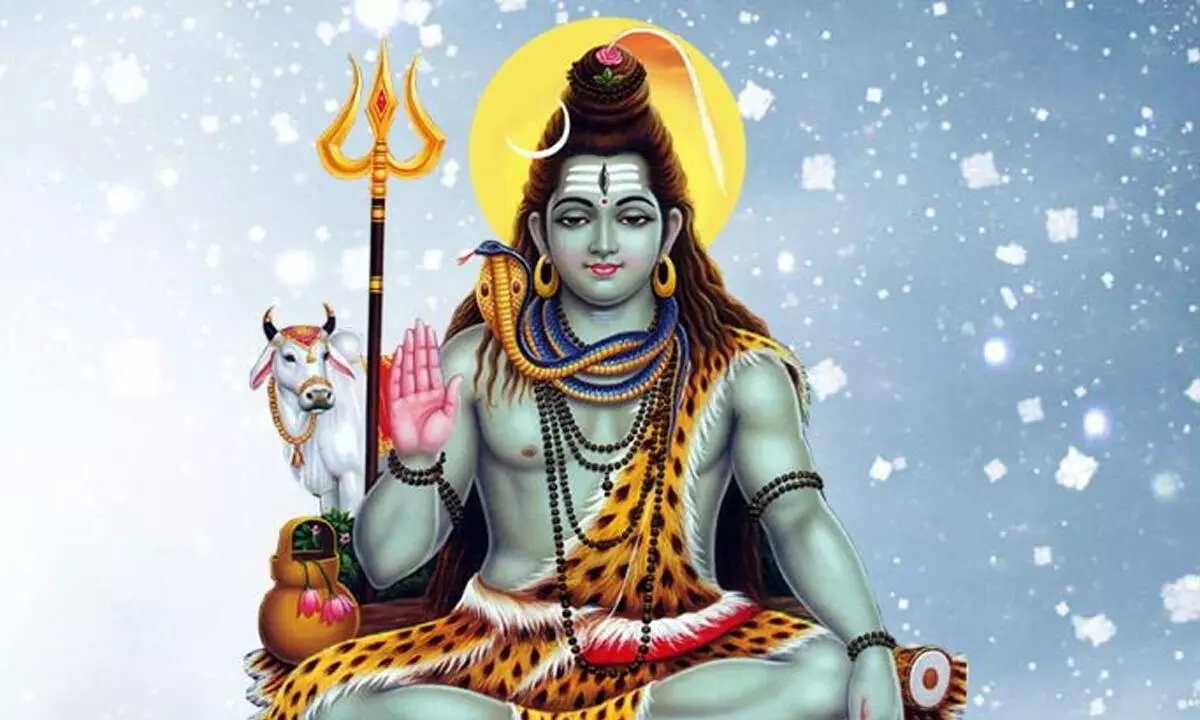Live
- Nizamabad MP Dharmapuri Arvind and Jagtial MLA Dr. Sanjay Kumar Meet CM Revanth Reddy
- Hyderabad CP CV Anand Issues Stern Warning to Bouncers
- MP Laxman Criticizes Police Conduct, Calls for Support for Victims' Families
- Fire Breaks Out in Kachiguda-Chennai Egmore Express, Passengers Evacuated Safely
- CM Revanth Reddy Condemns Attacks on Film Personalities' Homes, Calls for Strict Action
- Victory Venkatesh and Nandamuri Balakrishna to Set Screens on Fire with Unstoppable Season 4
- Over 71.81 crore Ayushman Bharat Health Account numbers generated: Centre
- In special gesture, Kuwait's Prime Minister sees-off PM Modi at airport after conclusion of historic visit
- Veer crowned PGTI Ranking champion, Shaurya wins emerging player honour
- Sr National Badminton: Unseeded Rounak Chauhan, Adarshini Shri reach singles semis
Just In

Kartika is the month closely associated with Rudra just as Margasira is associated with Vishnu
Kartika is the month closely associated with Rudra just as Margasira is associated with Vishnu. Shiva temples reverberate with the recitation of Sri Rudram, the Vedic passage describing the omnipresence of Rudra. Devotees observe austerities such as pre-dawn bath, fasting etc., enduring some physical discomfort. Many others visit temples and offer special prayers and ritualistic baths to Rudra. Some others invoke Rudra into all parts of their bodies following a unique and elaborate procedure. Such installation is called maha-nyasam, great infusion of the Lord into one’s body, to purify the body-mind-complex. It is said that only the person who is Rudra can worship Rudra. Assuming oneness with the deity is a common theme in many Hindu traditions.
Like many Vedic passages, this too is a philosophical passage, but we would not care if it were told so. Spice it with some selfishness and it attracts people. Desire fulfilment, or nullification of sins of innumerable births etc., is the spice which attracts people to the passage. Hence, the passage is used at different levels by different people. The gross level is to recite it in a yagna with physical offerings, ritualistic bathing of the Linga, followed by some charitable activity. Another level is to use it for meditation, upasana, an individual activity associated with austerities. This is the second level in which the devotee dwells on the meaning and not merely does it as a ritual. The third level is to see Rudra as the Supreme Reality, called Brahman in Vedanta, and to see oneself as not different from that. This is practiced by a mature devotee who has some understanding of Vedanta.
This passage can be understood better if we see the message of the Gita. Krishna repeatedly calls for sarvatma-bhava – seeing Brahman in all things, animate and inanimate. But here in Rudram one is surprised to see the long list of people in whom Rudra has to be seen. Rudra has to be seen in a thief, in a robber, in a land-grabber (it is strange to see the word kuluncha, meaning a land grabber, used even in those days), and people of many other professions. The long list may be of interest to a sociologist as it covers most social groups in Vedic society. There were people who made chariots, goldsmiths, ironsmiths, bow makers, dog trainers, and a host of others.
Even though the literal meaning of such words is enough for meditation, the Vedanta teachers have given philosophical meanings to various terms. For instance, the word thief refers to mind, which leads a person astray. Desire, anger, lust etc., are the robbers who rob the person of the diamond called self-knowledge (jnana-ratna). The word land-grabber refers to temptations which take away whatever achievements the seeker has attained. The chariot is a well-known symbol denoting the body-mind-complex. The sense organs are the horses, while the mind represents the reins. The analytical mind is the driver. The master of the chariot is the jiva. Rudra is the person who protects this master of the chariot.
Such special meanings are justified because of the Vedic prescription that gods take delight when they are addressed indirectly (paroksha) in symbolic or coded language. The common devotee is happy with the literal meaning, but the philosopher seeks the implied meaning, drawing from the metaphors already used in Vedic literature.
Towards the end of Rudram, we find a very popular mantra, the Mrityunjay mantra, that which conquers death. People fondly wish to postpone their ultimate departure by doing japa of the mantra, but its meaning is different. It invokes the three-eyed (the third eye symbolizing knowledge) Lord who bestows absolute dispassion from worldly desires so that the seeker, equipped with knowledge and dispassion, is ready to discard the body-mind-complex willingly just as a fully ripe cucumber falls off from the stem of the creeper without much ado. Ignorance, identification with the body-mind-complex, is death, and getting rid of it is immortality, not physical conquest of death. This is the final message of Rudram.
(The writer is a former DGP, Andhra Pradesh)

© 2024 Hyderabad Media House Limited/The Hans India. All rights reserved. Powered by hocalwire.com







